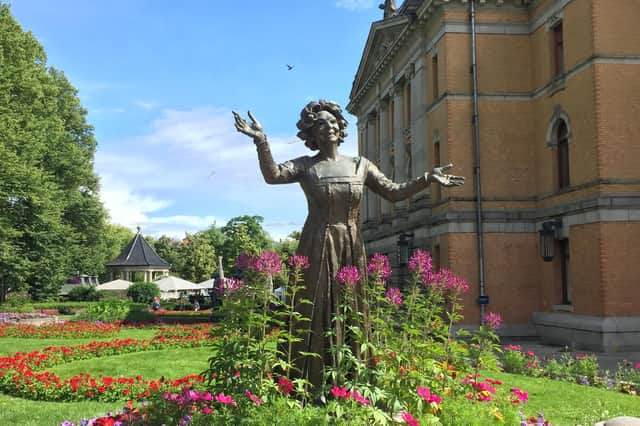International Women's Day: Let's welcome statues of great Scottish women onto our streets


With arms outstretched, Norwegian actor Wenche Foss stands in a bed of flowers, beckoning the viewer to look at her and her achievements.
Foss became famous for countless performances in TV shows, movies and theatre.
Advertisement
Hide AdAdvertisement
Hide AdShe was also an activist for gay rights and a humanitarian for people with disabilities and cancer.
I know this because I wanted to learn more about this inspiring bronze figure who stood before me.
Foss was the first woman I had seen memorialised in this way, barring the exception of a Queen Victoria in the centre of Glasgow, my home city.
Statues of men all dominate my city with their horses and their finery and, well, their “manliness”.
There are only four statues of women – Mary Barbour, Isabella Elder and Dolores Ibarrubi and Queen Victoria – across the entire city. To put this into context, there are 11 statues of men in George Square alone.
"Sisterhood is key to the feminist movement and general monuments honour that as a way of instigating progress”, writes Sara Sheridan in her book ‘Where are the women?’. which reimagines Scotland where all the streets and statues are dedicated to women.
Ms Sheridan imagines a Glasgow that “proudly displays statues of suffragettes” and each fictional street, building, statue and monument is dedicated to a real woman.
The Gorbals Swimming Pool turns into Graham Baths – dedicated to Lilias Violet Graham (1917-2008) who established a holiday scheme for children from disadvantaged backgrounds that still runs today.
Advertisement
Hide AdAdvertisement
Hide AdMs Sheridan’s work is not a novella, not a short read on a magazine page, but a 447-page history detailing the lives of countless Scottish women who are worthy of statues.
Seeing female representation in the environments we grow up in is so important, both for society and for inspiring women that they can and will be remembered.
As today marks International Women’s Day, it’s important to remember there are so few statues of women not because there are no great women in Scotland, but because we have chosen to ignore them.
So, like Wenche Foss, let us stretch out our arms and welcome these women onto our streets.
A message from the Editor:
Thank you for reading this article. We're more reliant on your support than ever as the shift in consumer habits brought about by Coronavirus impacts our advertisers.
If you haven't already, please consider supporting our trusted, fact-checked journalism by taking out a digital subscription.
Comments
Want to join the conversation? Please or to comment on this article.
